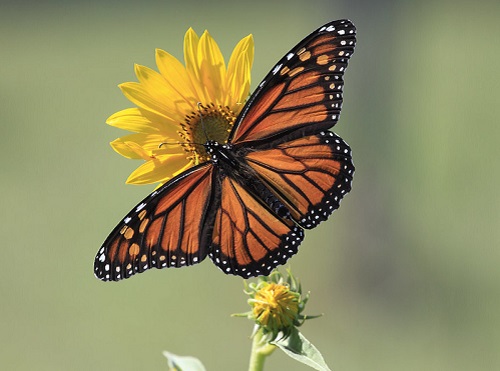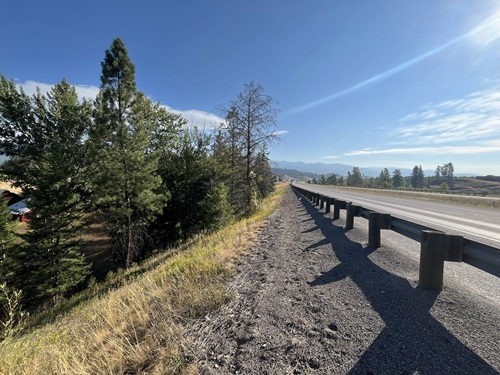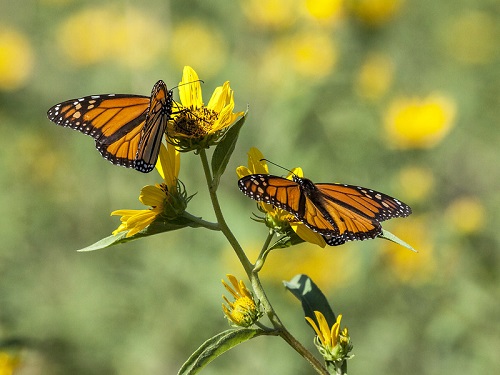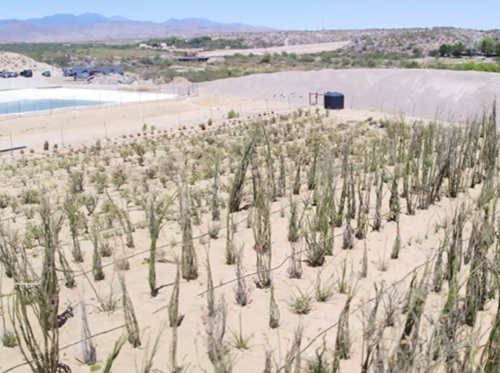On a road trip one October afternoon about eight years ago, John Maresh stopped for lunch in Sonora, TX, and was greeted by massive, shimmering orange and black waves of Monarch butterflies on their annual migration journey.
[Above photo by Randy Jones for U.S. Fish & Wildlife]
Nearly all Monarchs east of the Rocky Mountains in the U.S. and Canada migrate in October to the forested mountains of Central Mexico; a trip that takes the butterflies deep through the heart of Texas. Generally, Monarchs west of I-35 funnel down through West Texas, with those east of I-35 flying south to the Texas Gulf Coast.

Seeing the butterflies’ migration “was really cool,” Maresh said. But when he resumed his journey west after lunch, things turned ugly.
“It was disconcerting to be driving down Interstate 10…and you might miss one Monarch and you would hit another,” he said. “It was kind of horrific to see all these monarchs getting whacked on the highway.”
Maresh, a biologist and environmental specialist for the Texas Department of Transportation, wondered as he peered through his dirty windshield: “Is this predictable? Is this a phenomenon? Does it happen every year?”
Monarchs are important pollinators and part of the wildlife food cycle. However, their population has dropped dramatically over the past several years because of habitat loss and climate change.
[Editor’s note: Many state departments of transportation across the country are engaged in ways to support pollinator habitats, as the video below by the Kentucky Transportation Cabinet exemplifies.]
But Maresh asked himself a more specific question: Are vehicular collisions also leading to the demise of the Monarch?
While preventing butterflies from becoming road kill is not a primary function of state DOTs, the consequences of not helping Monarchs thrive go beyond platitudes about environmental stewardship and could soon become a time-and-money issue for every state DOT in the country.
For, in December, the U.S. Fish and Wildlife Service is expected to release a status assessment that could list the Monarch as an endangered species. That designation under the Endangered Species Act could have serious environmental consequences for all transportation projects that rely on federal funds.
And that’s where TxDOT’s potential solution for helping Monarchs safely migrate across roadways could prove useful.
[Part two of this article will explore a two-year-long pilot project TxDOT is conducting to aid butterfly migration.]
 Wildlife and Ecosystems
Wildlife and Ecosystems



